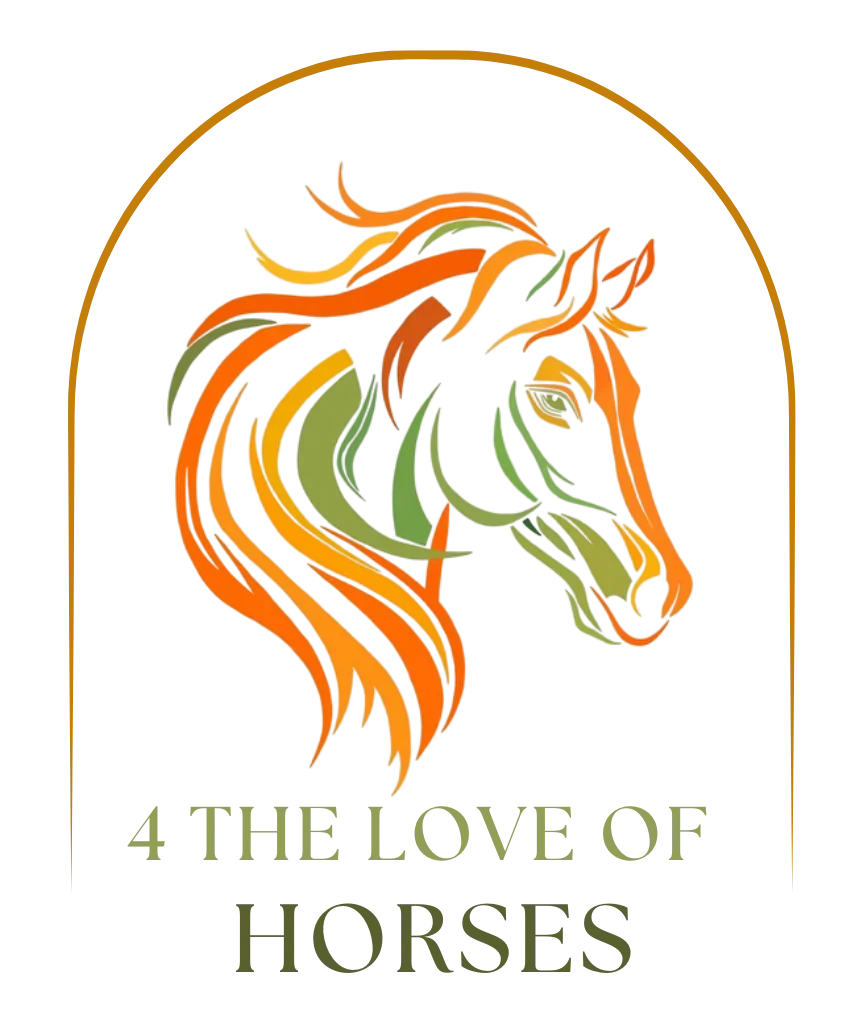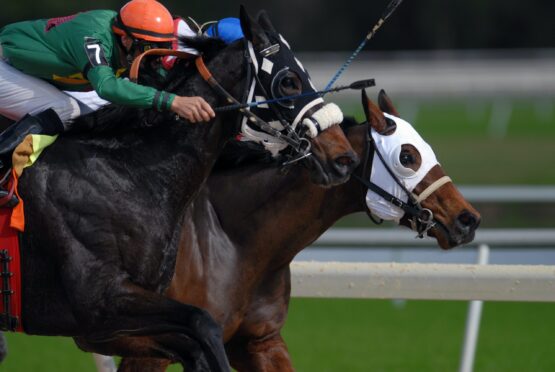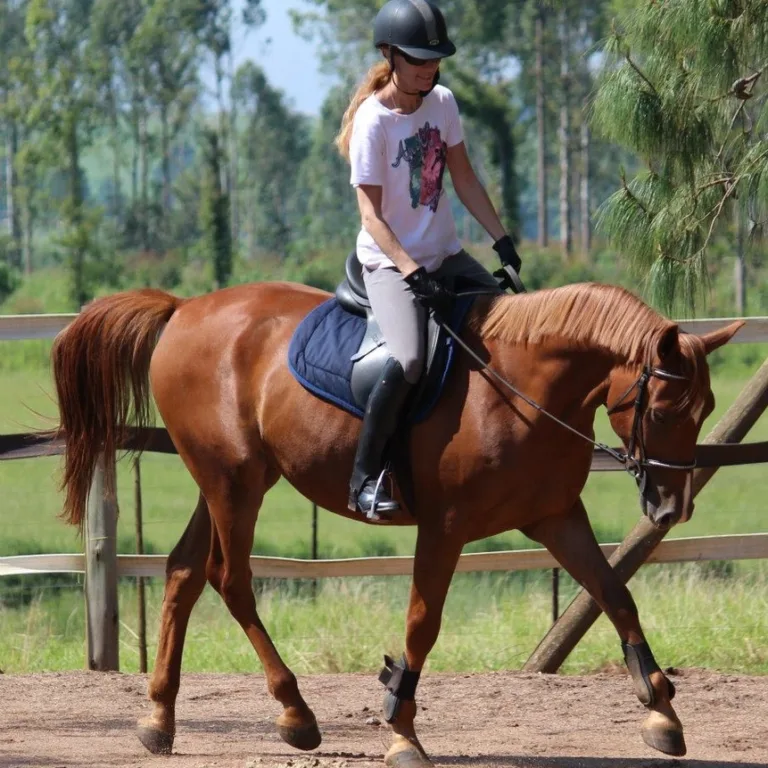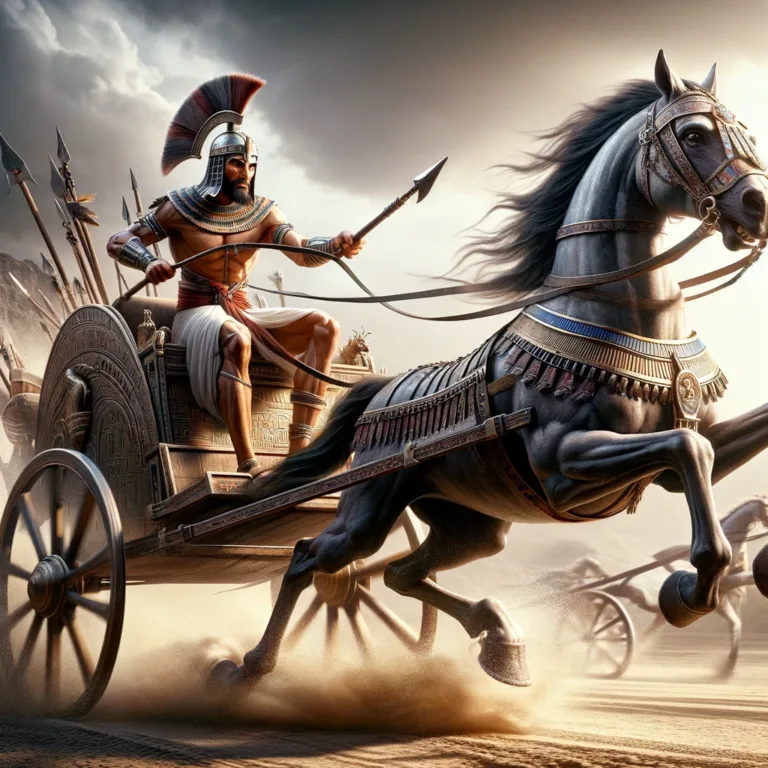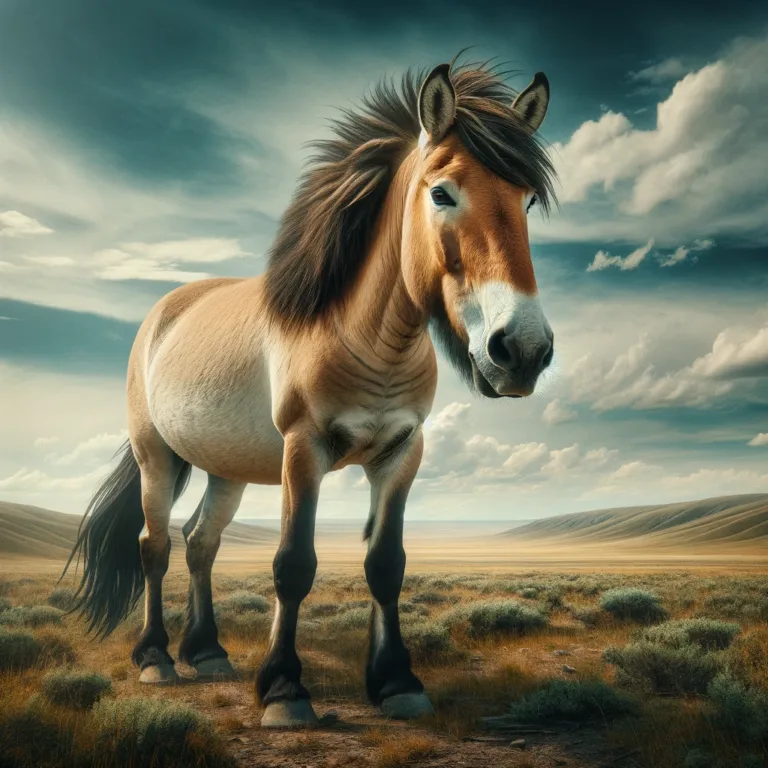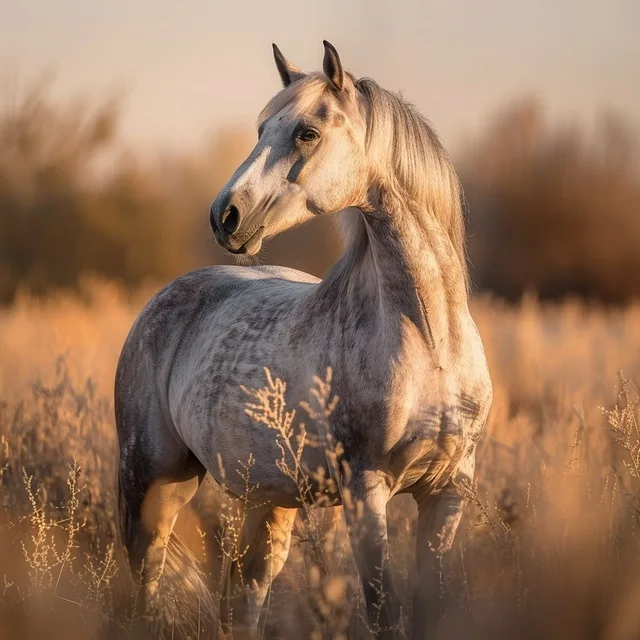Beyond the Track: Discovering the Versatility of Thoroughbred Horses
When you hear the word “Thoroughbred,” you will likely picture images of sleek horses thundering down a racetrack, nostrils flaring and hooves pounding. For centuries, these majestic animals have been synonymous with the sport of kings, captivating audiences with their speed, grace, and competitive spirit.
Thoroughbreds have dominated the world of horse racing since the 18th century, with their breeding carefully curated to produce some of the fastest equine athletes on the planet. From the Kentucky Derby to the Royal Ascot, these horses have written themselves into the annals of sporting history.
But what happens when the checkered flag falls for the last time? Is that the end of a Thoroughbred’s usefulness? Far from it. These remarkable horses possess a versatility that extends well beyond the confines of the racetrack. Their intelligence, athleticism, and willingness to please make them suitable for a wide array of equestrian disciplines and purposes.
In this article, we’ll explore the many facets of Thoroughbred horses beyond their racing careers. From show jumping to therapy work, from dressage arenas to quiet trail rides, these adaptable equines are proving that there’s much more to a Thoroughbred than meets the eye at the starting gate. Join us as we discover the hidden talents and unexpected roles of these extraordinary horses in their life beyond the track.
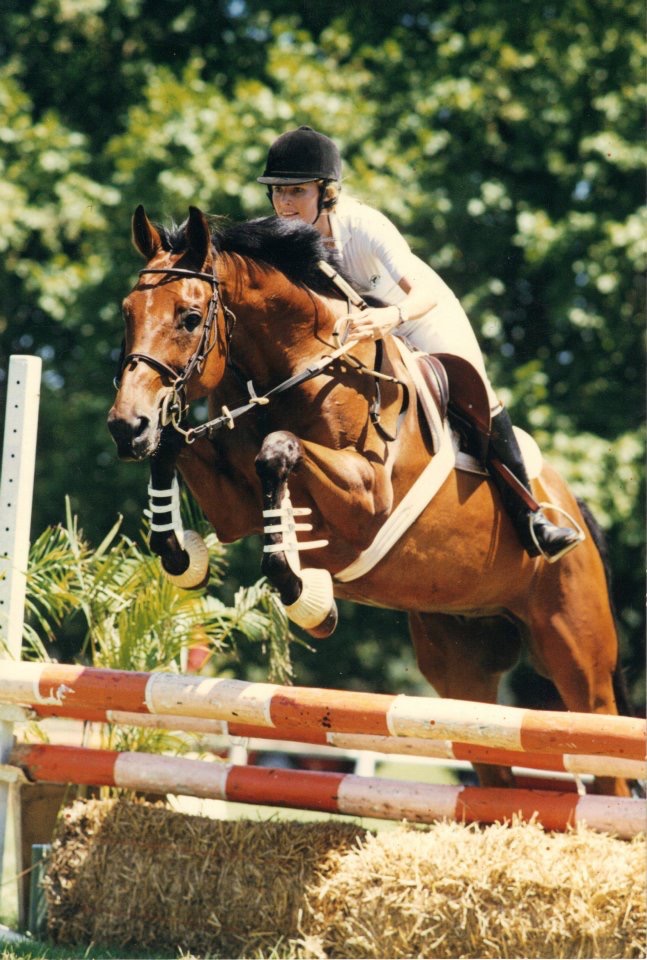
The Thoroughbred’s Natural Attributes
To understand why Thoroughbreds excel in various disciplines, it is important to look at the natural attributes that make these horses so special.
Physical characteristics
Thoroughbreds are known for their athletic build, typically standing between 15.2 and 17 hands high. Their bodies are characterized by:
- Long, slender legs built for speed and agility
- Deep chest capacity, allowing for greater lung expansion
- Lean, muscular physique
- Refined head with large, expressive eyes
- High-set neck that contributes to their naturally uphill balance
These physical traits, honed through centuries of selective breeding, not only make Thoroughbreds exceptional racehorses but also provide them with the foundation to excel in other riding disciplines.
Mental traits
Beyond their physical prowess, Thoroughbreds possess distinct mental characteristics that contribute to their versatility:
- Intelligence: Quick learners, they often pick up new skills rapidly
- Sensitivity: Responsive to subtle cues, making them ideal partners for skilled riders
- Eagerness to please: Generally willing to work and form strong bonds with their handlers
- Athletic drive: Their inherent “forward” energy can be channeled into various activities
- Adaptability: Capable of adjusting to new environments and routines
While these traits can present challenges – Thoroughbreds can be high-strung and reactive if not properly managed – they also make these horses incredibly rewarding to work with. Their intelligence and sensitivity allow for nuanced communication between horse and rider, while their eagerness and adaptability make them suitable for a wide range of activities.
These natural attributes, both physical and mental, provide a strong foundation for Thoroughbreds to transition into new roles after their racing careers, opening up a world of possibilities for these versatile equines.
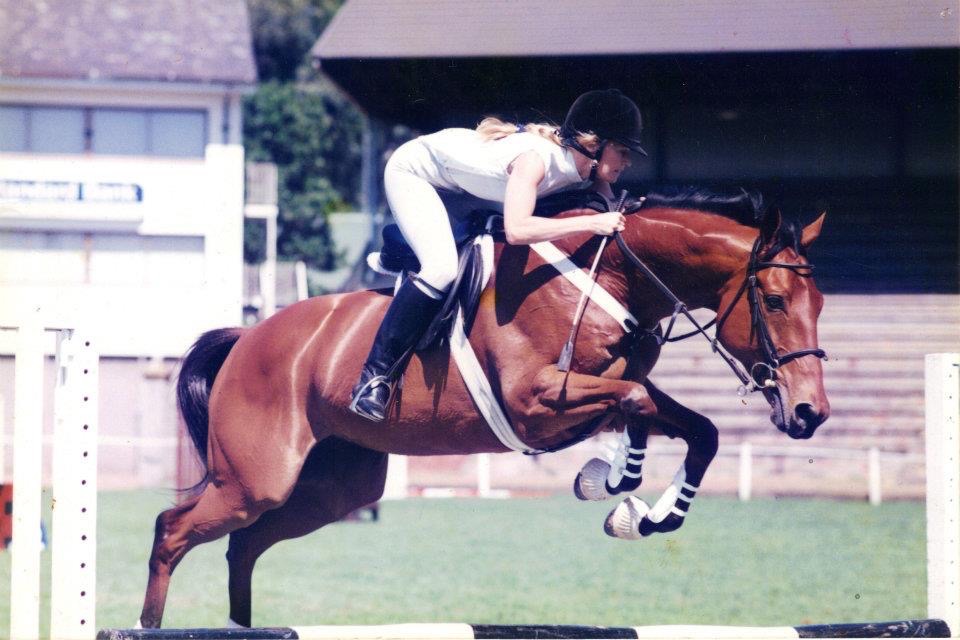
Transitioning from Racing to Other Disciplines
The Retraining process
The journey from racehorse to versatile mount involves a carefully planned retraining process:
- Physical recovery: Allowing time for the horse to recuperate from the rigors of racing
- Diet adjustment: Modifying nutrition to suit a less intense work schedule
- Basic groundwork: Reestablishing respect and communication on the ground
- Reschooling under saddle: Teaching new cues and expectations for non-racing activities
- Gradual introduction to new disciplines: Exposing the horse to various activities to find its strengths
Patience is key during this transition. Many organizations specializing in off-track Thoroughbreds (OTTBs) have developed effective retraining programs that focus on building trust and confidence while redirecting the horse’s energy and athleticism.
Challenges and rewards
Retraining Thoroughbreds comes with its unique set of challenges:
- Overcoming ingrained racing habits
- Managing high energy levels and sensitivity
- Addressing any physical issues from their racing career
- Building new muscle groups for different types of work
- Developing a more relaxed and focused mindset
Despite these challenges, the rewards of working with transitioning Thoroughbreds can be immense:
- Forming a strong bond with an intelligent, responsive horse
- Witnessing the transformation from racehorse to versatile partner
- Uncovering hidden talents and aptitudes
- Providing a meaningful second career for these athletes
- Potentially excelling in new disciplines due to their natural athleticism
Many riders and trainers find the process of transitioning a Thoroughbred to be an incredibly fulfilling experience. The journey requires dedication and understanding, but the result is often a talented, loyal equine partner capable of succeeding in a wide range of activities.
As we’ll explore in the following sections, the versatility of retrained Thoroughbreds allows them to shine in various equestrian pursuits, from competitive sports to therapeutic roles.
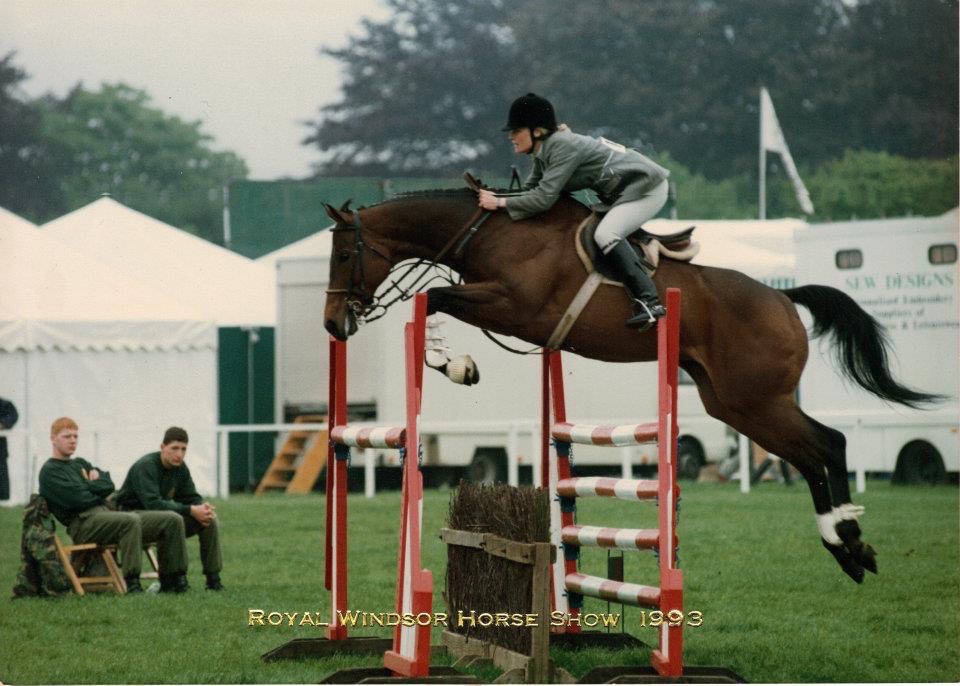
Thoroughbreds in Equestrian Sports
Thoroughbreds’ natural athleticism and competitive spirit make them excellent candidates for various equestrian sports. Let’s explore some of the disciplines where these versatile horses excel:
Show jumping
Thoroughbreds often find great success in the show jumping arena:
- They have the natural athleticism and power to clear high fences
- Quick reflexes and agility for tight turns
- Competitive drive that translates well to the jumping course
- They are very sensitive and careful – they do not like touching poles
Many famous show jumpers have Thoroughbred bloodlines and pure Thoroughbreds continue to make their mark in this discipline at all levels of competition.
Dressage
While not traditionally associated with dressage, Thoroughbreds are increasingly proving their worth in this discipline:
- They have natural forward movement and responsiveness to aids
- Their conformation is long legged and elegant that lends itself to dressage movements
- Their intelligence and work ethic can help to master complex maneuvers
With proper training, Thoroughbreds can develop the balance and collection required for dressage, often bringing a unique energy and expressiveness to their performances.
Eventing
Perhaps the discipline where Thoroughbreds shine brightest is eventing, which combines dressage, show jumping, and cross-country:
- They were bred to have stamina and speed to fly in the cross-country phase
- Jumping ability for both stadium and cross-country obstacles
- Versatility to perform well in all three phases
Thoroughbreds have long dominated the sport of eventing, with their courageous nature and athletic prowess making them ideal partners for this challenging discipline.
In each of these sports, Thoroughbreds’ natural attributes come to the fore. Their speed, agility, and endurance – traits that served them well on the racetrack – translate effectively to these new arenas. Moreover, their intelligence and willingness to work make them receptive to the specialized training required for these disciplines.
It’s worth noting that while many top-level competitors in these sports ride purpose-bred horses, Thoroughbreds and Thoroughbred crosses continue to make their mark. From local competitions to international championships, these versatile athletes prove time and again that there’s life after racing – and often, it’s a life filled with new triumphs and achievements.
Thoroughbreds as Recreational Mounts
While Thoroughbreds excel in competitive disciplines, they also make wonderful companions for recreational riders. Their versatility extends beyond the show ring into everyday riding activities.
Trail riding
Contrary to the stereotype of the “hot” Thoroughbred, many of these horses become excellent trail partners:
- Stamina for long rides
- Sure-footedness developed from their athletic background
- Curiosity and intelligence that make them engaged trail companions
- Ability to cover ground efficiently, making them ideal for longer treks
With proper desensitization and training, Thoroughbreds can become calm and reliable on the trail. Their forward energy, when properly channeled, allows them to maintain a steady pace over varied terrain.
Pleasure riding
For those who enjoy casual riding in arenas or open fields, Thoroughbreds can be delightful mounts:
- Smooth gaits that are comfortable for riders
- Responsiveness that allows for easy communication between horse and rider
- Versatility to engage in various activities, from simple flatwork to small jumps
- Eagerness to please, often resulting in a strong bond with their riders
Many Thoroughbreds, especially as they mature, develop into gentle and affectionate horses perfect for leisurely rides. Their intelligence and sensitivity, when met with consistent and kind handling, often result in horses that are tuned in to their riders and enjoyable to work with.
It’s important to note that each Thoroughbred is an individual. While some may require more experienced handlers, many become suitable for intermediate or even beginner riders with proper training and matching. Organizations that rehome off-track Thoroughbreds often excel at pairing horses with riders of appropriate skill levels.
The joy of riding a Thoroughbred for pleasure comes not just from their physical capabilities, but from the connection that develops between horse and rider. Their expressive nature and willingness to form bonds make them rewarding partners for those who take the time to understand and appreciate them.
Whether it’s a peaceful hack through the countryside or a fun ride in the arena, Thoroughbreds can be just as adept at leisure activities as they are at high-level competition. This adaptability further underscores their versatility and the wide range of roles they can fill beyond their racing careers.
Therapeutic Uses for Thoroughbreds
One of the most heartwarming ways Thoroughbreds have found purpose beyond the track is in therapeutic riding programs. Their sensitive nature and intelligence make them excellent partners in helping humans heal and grow.
Equine-assisted therapy programs
Thoroughbreds are increasingly being used in various therapeutic settings:
- Physical therapy: Their smooth gaits can help patients improve balance, coordination, and strength.
- Mental health treatment: Interacting with these perceptive animals can aid in emotional regulation and trust-building.
- Cognitive therapy: Working with Thoroughbreds can enhance focus, problem-solving skills, and memory.
- Speech therapy: The multisensory experience of riding can stimulate language development.
Many Thoroughbreds, with their keen sensitivity to human emotions, excel in these roles. Their responsiveness allows therapists to tailor sessions to each client’s needs effectively.
Success stories
The impact of Thoroughbreds in therapeutic settings is best illustrated through real-life examples:
- Veterans with PTSD finding peace and purpose in caring for and riding Thoroughbreds
- Children with autism developing communication skills and emotional connections through equine interactions
- Individuals with physical disabilities gaining strength and confidence through therapeutic riding programs
- At-risk youth learning responsibility and empathy through horse care and riding
These success stories highlight the unique qualities Thoroughbreds bring to therapeutic work. Their size and presence command respect, helping clients overcome fears and build confidence. At the same time, their sensitivity and intelligence allow for nuanced interactions that can be profoundly healing.
It’s worth noting that not all Thoroughbreds are suited for therapeutic work. Those selected for these programs typically undergo careful assessment and additional training. However, for those that do enter this field, the work can be as transformative for the horses as it is for the humans they help.
The use of Thoroughbreds in therapy showcases yet another dimension of these versatile animals. From the high-energy environment of the racetrack to the calm, nurturing atmosphere of a therapy session, these horses demonstrate an remarkable ability to adapt and connect with humans in meaningful ways.
Through their work in therapeutic settings, Thoroughbreds continue to touch lives long after their racing days are over, proving that their value extends far beyond their speed on the track.
Thoroughbreds in Non-Riding Roles
While Thoroughbreds are often celebrated for their ridden performances, they can also excel in roles that don’t involve carrying a rider. These non-riding roles showcase the breed’s versatility and adaptability.
Companion animals
Many Thoroughbreds find fulfilling lives as companion animals:
- Pasture buddies for other horses, providing social interaction and herd dynamics
- Emotional support animals for humans, offering comfort and a calming presence
- Lawn ornaments for those who simply enjoy watching horses graze and play
Their expressive nature and tendency to form strong bonds make Thoroughbreds excellent companions. For retired or rehabilitating horses, or those unable to be ridden, this role can provide a meaningful and low-stress life.
Equine ambassadors for educational programs
Thoroughbreds often serve as excellent ambassadors in educational settings:
- School programs teaching children about horse care and behavior
- Agricultural fairs and exhibitions showcasing different horse breeds
- Racing industry education, helping the public understand the sport’s history and practices
- Conservation programs highlighting the importance of land preservation for equine activities
Their striking appearance and often gentle demeanor make Thoroughbreds ideal for these public-facing roles. They can help spark interest in equestrianism and promote understanding of horse welfare.
Models and film stars
Some Thoroughbreds find fame in front of the camera:
- Equine models for artwork, photography, and advertising
- Actors in films and television shows, especially those requiring athletic performances
- Participants in historical reenactments or live shows
Their natural beauty and trainability make Thoroughbreds well-suited for these roles, allowing them to continue captivating audiences off the track.
Conservation grazing
An emerging role for some Thoroughbreds is in conservation grazing programs:
- Helping to maintain grassland ecosystems
- Controlling invasive plant species in a natural, environmentally friendly way
- Contributing to biodiversity in managed landscapes
This role allows Thoroughbreds to live naturally while serving an important ecological function.
These non-riding roles demonstrate that Thoroughbreds’ value isn’t limited to their athletic abilities. Their intelligence, beauty, and adaptability allow them to contribute to human society in diverse and sometimes unexpected ways. Whether as a loving companion, an educational ambassador, or a conservation partner, Thoroughbreds continue to prove their worth beyond the saddle, enriching lives and environments in numerous ways.
The Growing Popularity of Off-Track Thoroughbreds (OTTBs)
In recent years, there has been a surge of interest in adopting and repurposing off-track Thoroughbreds (OTTBs). This trend reflects a growing awareness of these horses’ versatility and the satisfaction of giving them a second career.
Organizations supporting OTTB adoption
Numerous organizations have emerged to facilitate OTTB adoption and retraining:
- Thoroughbred Aftercare Alliance: Accredits and funds aftercare organizations across North America
- Retired Racehorse Project: Promotes OTTBs through education and competitions like the Thoroughbred Makeover
- CANTER (Communication Alliance to Network Thoroughbred Ex-Racehorses): Provides listings of retiring racehorses available for adoption
- New Vocations Racehorse Adoption Program: Retrains and rehomes retired racehorses
These organizations play a crucial role in transitioning Thoroughbreds from the track to new homes and careers. They often provide resources, training, and support to both horses and adopters.
Success stories of adopted OTTBs
The tales of successful OTTB adoptions are numerous and inspiring:
- “Metro Meteor,” a former racehorse who became a celebrated equine artist, raising funds for OTTB adoption
- “Blackfoot Mystery,” an OTTB who competed in the 2016 Rio Olympics in eventing
- “Icabad Crane,” a former Preakness Stakes contender who became a successful eventer
- Numerous OTTBs excelling in local and national competitions across various disciplines
These success stories span from high-profile achievements to quieter triumphs of horses finding loving homes and purposeful lives after racing.
Benefits of adopting OTTBs
The growing popularity of OTTBs can be attributed to several factors:
- Affordability: Many OTTBs are available for adoption at lower costs compared to purpose-bred sport horses
- Known history: Most OTTBs come with detailed records of their lineage and medical history
- Proven athleticism: Their racing background demonstrates their physical capabilities
- Satisfaction of repurposing: Many adopters find joy in giving these athletes a second chance
Challenges and considerations
While rewarding, adopting an OTTB does come with challenges:
- Potential need for rehabilitation from racing injuries
- Retraining requirements to transition from track to new disciplines
- Higher energy levels that may require experienced handling
However, many adopters find that with patience and proper support, these challenges are outweighed by the rewards of working with these versatile athletes.
The growing popularity of OTTBs reflects a positive trend in the equestrian world, emphasizing the value of these horses beyond their racing careers. It showcases the Thoroughbred’s adaptability and the equestrian community’s commitment to providing meaningful second careers for these remarkable animals.
Conclusion
As we’ve explored throughout this article, Thoroughbred horses possess a remarkable versatility that extends far beyond the racetrack. From the show jumping arena to the therapy paddock, from trail rides to film sets, these adaptable equines continue to prove their worth in a myriad of roles.
The natural attributes that make Thoroughbreds exceptional racehorses – their athleticism, intelligence, and eagerness to please – also equip them for success in various equestrian disciplines and non-riding roles. Their transition from the track to new careers showcases not only their adaptability but also the dedication of the people who work to give these horses a purposeful life after racing.
The growing popularity of off-track Thoroughbreds (OTTBs) is a testament to the breed’s enduring appeal and the satisfaction many find in offering these athletes a second chance. Organizations supporting OTTB adoption and retraining have played a crucial role in highlighting the potential of these horses and facilitating their transitions.
As we’ve seen, Thoroughbreds can excel as:
- Competitive sport horses in disciplines like show jumping, dressage, and eventing
- Reliable and enjoyable recreational mounts for trail and pleasure riding
- Valuable partners in therapeutic riding programs
- Ambassadors in educational programs and public events
- Companions and conservation partners in non-riding roles
Each Thoroughbred is an individual, with its own strengths and challenges. However, with proper training, patience, and understanding, these horses often reveal hidden talents and form deep bonds with their human partners.
The versatility of Thoroughbreds reminds us that there’s life beyond the track for these magnificent animals. It encourages us to look beyond stereotypes and see the potential in every horse. Whether you’re a competitive rider, a casual enthusiast, or someone looking to make a difference in a horse’s life, consider the Thoroughbred. You might just discover a partner capable of more than you ever imagined.
In celebrating the Thoroughbred’s versatility, we not only open new doors for these horses but also enrich our own equestrian experiences. The story of the Thoroughbred is one of adaptability, resilience, and partnership – a story that continues to be written long after the last race is run.
Success Stories
The versatility and adaptability of Thoroughbred horses beyond the racetrack are perhaps best exemplified through the countless success stories of retired racehorses thriving in their second careers. From humble beginnings on the track to soaring heights in the show ring or dressage arena, these remarkable animals have captured the hearts and imaginations of equestrians around the world.
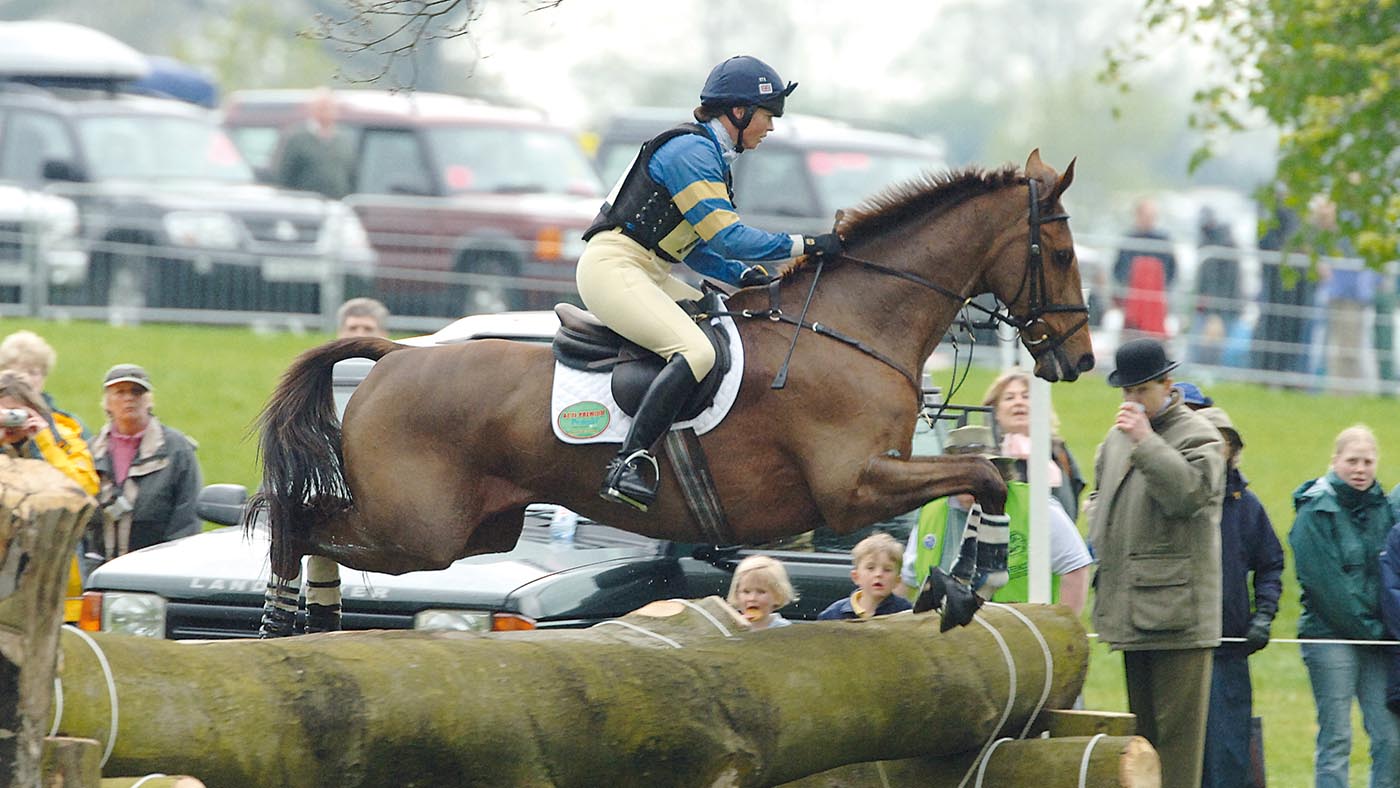
Over To You: A Thoroughbred Off the Track
Meet Over To You, the chestnut gelding whose legacy in the world of eventing is nothing short of legendary. Despite his humble beginnings as an unsuccessful racehorse, Over To You, affectionately known as Jack, soared to unparalleled heights in the eventing arena, becoming the most medalled event horse in British history.
Over To You’s remarkable career as a pathfinder for the British team is adorned with accolades that speak volumes of his talent and tenacity. With four European team gold medals, two Olympic team silvers, one World team bronze, and an individual World silver medal to his name, Jack’s prowess on the cross-country course captured the hearts of eventing fans worldwide.
Although he never claimed victory at the racetrack, Over To You found his true calling in eventing, where he excelled with grit and determination. Completing an impressive eight four-star events, including being the last horse to run the long format at Badminton, Jack proved that success knows no bounds when passion and perseverance meet.
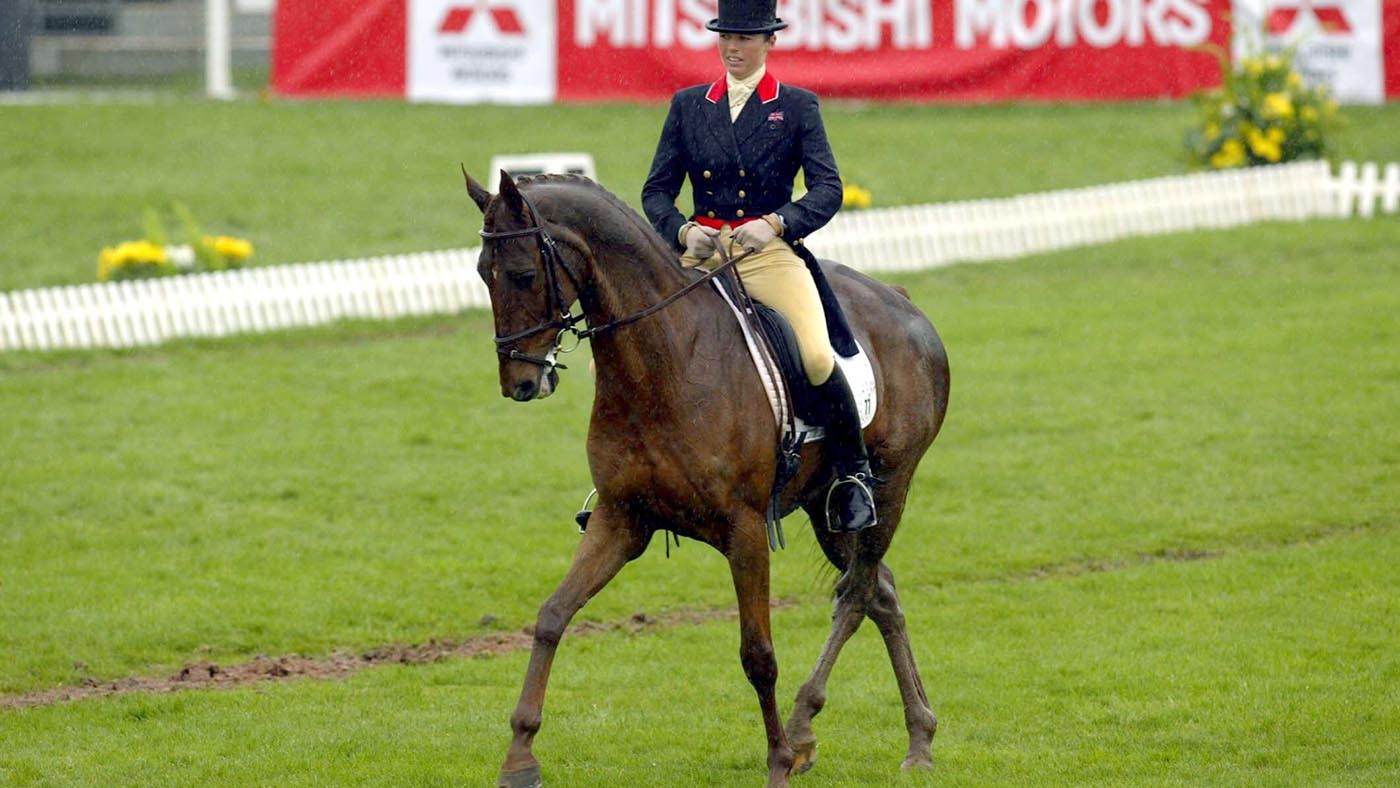
Over To You’s partnership with rider Jeanette Brakewell was a match made in eventing heaven. Launching Brakewell’s career to new heights, Jack’s unwavering spirit and athleticism endeared him to fans and competitors alike. His biography, penned by Brakewell and Hilary Manners, immortalizes his remarkable journey from racetrack reject to eventing superstar.
In 2018, Jack celebrated his 30th birthday surrounded by friends, fans, and well-wishers, a testament to his enduring legacy and the indelible mark he left on the sport of eventing. His story serves as a reminder that success often comes to those who dare to dream, persevere through adversity, and embrace the unexpected twists of fate.
As an old-school eventing Thoroughbred, Over To You’s career epitomizes longevity, grit, and a touch of serendipity. From the racetrack to the eventing arena, his journey is a testament to the transformative power of partnership, dedication, and the unbreakable bond between horse and rider.

Quadrille: A Dressage Sensation
Meet Quadrille, sired by the remarkable Danehill Dancer, who has captured the hearts of equestrian enthusiasts as the epitome of versatility and excellence in the dressage arena. Bred and owned by Her Majesty The Queen, Quadrille’s journey from the racetrack to the dressage ring is nothing short of extraordinary.
Trained by Richard Hannon Senior, Quadrille enjoyed a successful racing career, notching up three wins from seven starts and securing a commendable second place in the prestigious 2010 Hampton Court Stakes at Royal Ascot. However, when injury sidelined him from the racetrack, Quadrille embarked on a new chapter under the guidance of Louise Robson of Thoroughbred Dressage.
Quadrille’s transition to dressage was nothing short of remarkable, as he quickly proved himself to be a natural talent in the discipline. Named the Retraining of Racehorses Horse of the Year in 2020, Quadrille became the highest-performing Thoroughbred on the British dressage circuit, showcasing his elegance, athleticism, and precision with each performance.
Throughout his dressage career, Quadrille has amassed an impressive array of achievements, including three appearances at the British Dressage Winter Championships, victory at the Petplan Area Festival at Medium level, and consecutive titles as Retraining of Racehorses Champion at Advanced Medium in 2015 and 2016. With a recent win at Inter I, Quadrille and Louise Robson have their sights set on competing at the Grand Prix level, a testament to their unwavering dedication and determination.
Quadrille and his stablemates at Thoroughbred Dressage serve as shining examples of the potential of ex-racehorses in the world of dressage. Their success not only highlights the innate talent and versatility of Thoroughbreds but also underscores the importance of proper training and guidance in unlocking their full potential. As ambassadors for ex-racehorses everywhere, Quadrille and his companions inspire us all to dream big, work hard, and never underestimate the transformative power of partnership between horse and rider.
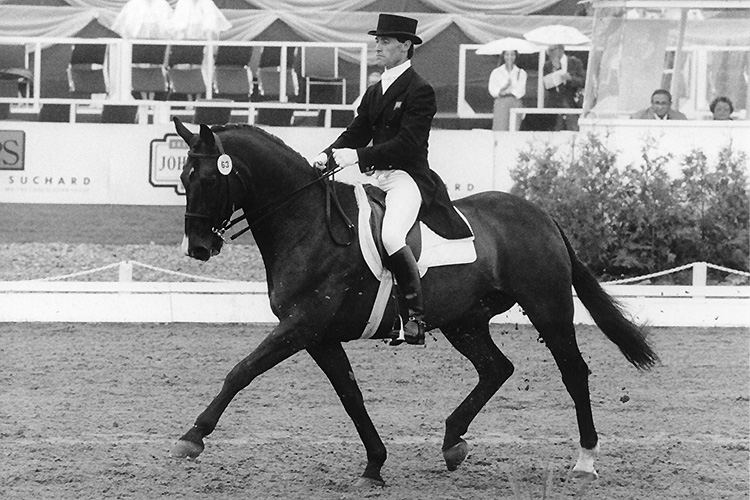
Wily Trout: From Racehorse to Dressage Star
In the annals of British dressage history, one name stands out as a true trailblazer: Wily Trout, the unlikely hero who defied expectations and soared to greatness in the dressage arena. While Britain’s eventing and showjumping teams basked in the glory of numerous medals, it was not until the 2012 London Games that Britain would claim its first Olympic dressage medal. However, long before this historic achievement, Wily Trout had already etched his name into the annals of equestrian history as Britain’s greatest Olympic dressage horse.
Trained and ridden by Chris Bartle, a luminary in the world of eventing, Wily Trout’s journey to dressage stardom began inauspiciously. Originally destined for eventing glory, Wily Trout suffered a tendon injury while preparing for the 1976 Burghley Horse Trials, prompting a change in career direction. It was decided that the gelding, who had previously dabbled in point-to-point racing, would focus on pure dressage—a decision that would prove to be a stroke of genius.
Under Chris Bartle’s expert guidance, Wily Trout quickly established himself as a formidable force in the dressage arena, competing as an individual at the World Championships and representing the British team from 1981 to 1987. Their partnership reached its pinnacle at the 1984 Olympics in Los Angeles, where they finished an impressive sixth individually—a feat that would remain unmatched by any British combination for nearly three decades. Additionally, Wily Trout and Bartle secured a remarkable second place in the 1986 World Cup final, further solidifying their status as one of Dressage’s most formidable duos.
For Wily Trout, a horse originally purchased with doubts about his suitability for eventing’s first phase, the journey to dressage greatness was nothing short of extraordinary. His story serves as a testament to the power of perseverance, determination, and the unbreakable bond between horse and rider. In an era before British dressage ascended to the heights of international success, Wily Trout blazed a trail for future generations of dressage stars, proving that with talent, dedication, and a touch of serendipity, anything is possible.
These are just a few of the many success stories that highlight the incredible potential of Thoroughbred horses beyond the racetrack. From dressage to eventing, show jumping to trail riding, these magnificent animals continue to defy expectations and exceed all limitations, proving time and time again that with the right training, care, and dedication, anything is possible. As we celebrate their achievements, let us never forget the extraordinary spirit and athleticism of the Thoroughbred horse, whose legacy will endure for generations to come.
More resources
Thoroughbred Aftercare alliance: https://www.thoroughbredaftercare.org/what-is-an-ottb
Retired Racehorse project https://www.therrp.org/education/how-to-acquire-an-off-track-thoroughbred
